Arindam Bose
Ambiguity Function Shaping in FMCW Automotive Radar
Feb 26, 2024

Abstract:Frequency-modulated continuous wave (FMCW) radar with inter-chirp coding produces high side-lobes in the Doppler and range dimensions of the radar's ambiguity function. The high side-lobes may cause miss-detection due to masking between targets that are at similar range and have large received power difference, as is often the case in automotive scenarios. In this paper, we develop a novel code optimization method that attenuates the side-lobes of the radar's ambiguity function. In particular, we introduce a framework for designing radar transmit sequences by shaping the radar Ambiguity Function (AF) to a desired structure. The proposed approach suppresses the average amplitude of the AF of the transmitted signal in regions of interest by efficiently tackling a longstanding optimization problem. The optimization criterion is quartic in nature with respect to the radar transmit code. A cyclic iterative algorithm is introduced that recasts the quartic problem as a unimodular quadratic problem (UQP) which can be tackled using power-method-like iterations (PMLI). Our numerical results demonstrate the effectiveness of the proposed algorithm in designing sequences with desired AF which is of great interest to the future generations of automotive radar sensors.
Mutual Interference Mitigation in PMCW Automotive Radar
Jun 16, 2023

Abstract:This paper addresses the challenge of mutual interference in phase-modulated continuous wave (PMCW) millimeter-wave (mmWave) automotive radar systems. The increasing demand for advanced driver assistance systems (ADAS) has led to a proliferation of vehicles equipped with mmWave radar systems that operate in the same frequency band, resulting in mutual interference that can degrade radar performance creating safety hazards. We consider scenarios involving two similar PMCW radar systems and propose an effective technique for a cooperative design of transmit waveforms such that the mutual interference between them is minimized. The proposed approach is numerically evaluated via simulations of a mmWave automotive radar system. The results demonstrate that the proposed technique notably reduces mutual interference and enhances radar detection performance while imposing very little computational cost and a negligible impact on existing infrastructure in practical automotive radar systems
Waveform Design for Mutual Interference Mitigation in Automotive Radar
Aug 08, 2022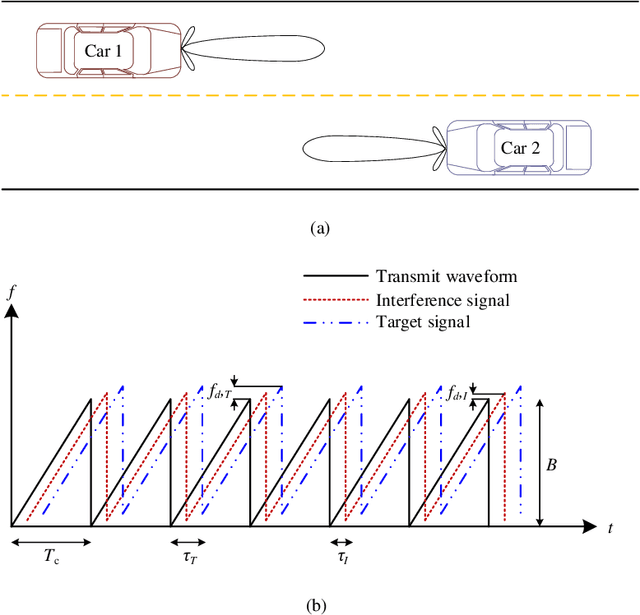
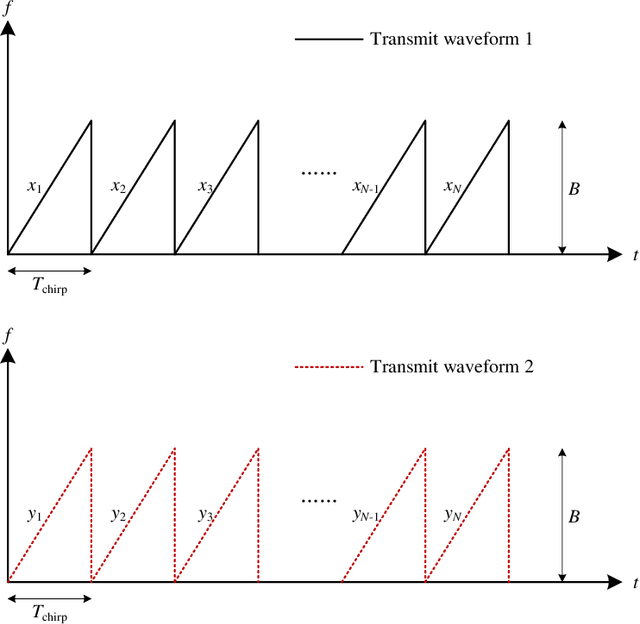
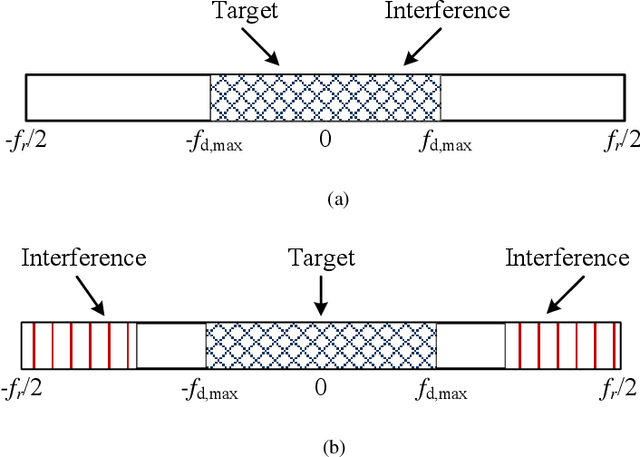
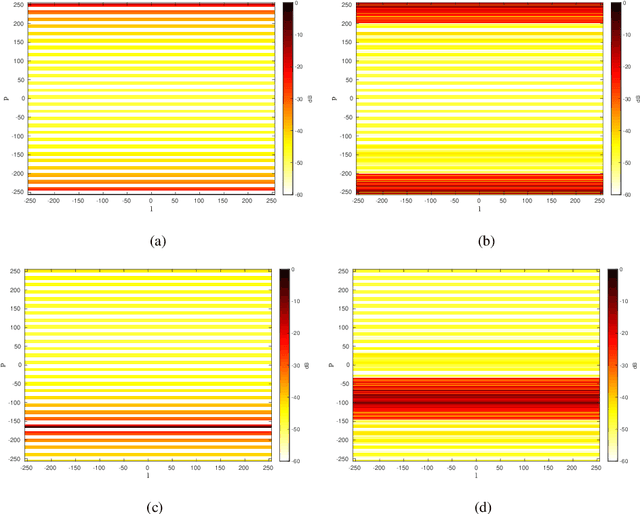
Abstract:The mutual interference between similar radar systems can result in reduced radar sensitivity and increased false alarm rates. To address the synchronous and asynchronous interference mitigation problems in similar radar systems, we first propose herein two slow-time coding schemes to modulate the pulses within a coherent processing interval (CPI) for a single-input-single-output (SISO) scenario. Specifically, the first coding scheme relies on Doppler shifting and the second one is devised based on an optimization approach. We further extend our discussion to the more general case of multiple-input-multiple-output (MIMO) radars and propose an efficient algorithm to design waveforms to mitigate mutual interference in such systems. The proposed coding schemes are computationally efficient in practice and the incorporation of the coding schemes requires only a slight modification of the existing systems. Our numerical examples indicate that the proposed coding schemes can reduce the interference power level in a desired area of the cross-ambiguity function significantly.
Deep-URL: A Model-Aware Approach To Blind Deconvolution Based On Deep Unfolded Richardson-Lucy Network
Feb 06, 2020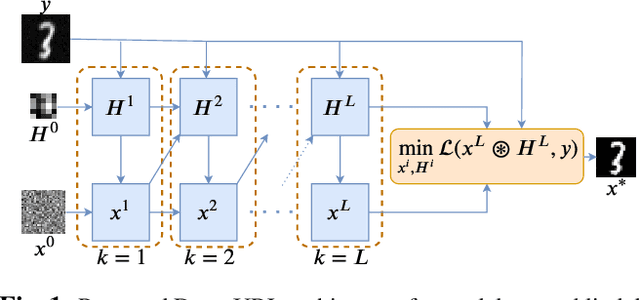
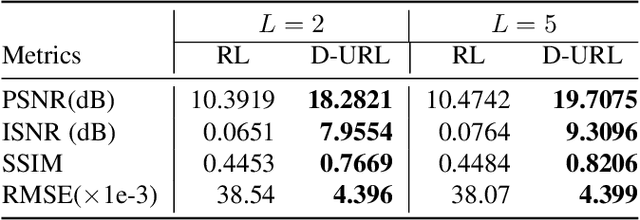
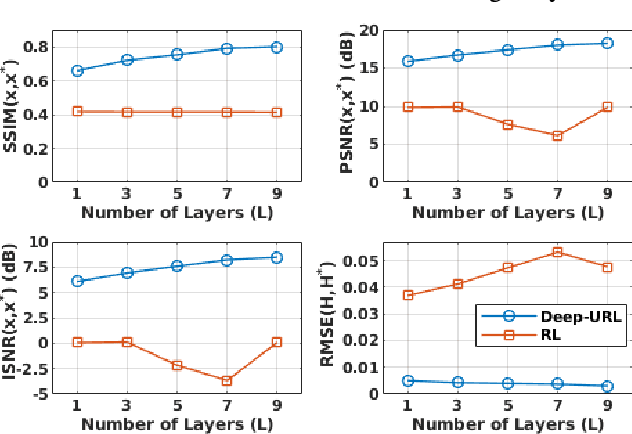
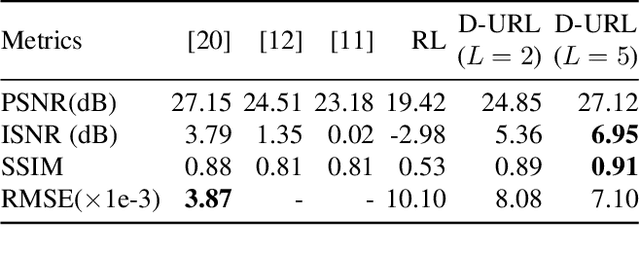
Abstract:The lack of interpretability in current deep learning models causes serious concerns as they are extensively used for various life-critical applications. Hence, it is of paramount importance to develop interpretable deep learning models. In this paper, we consider the problem of blind deconvolution and propose a novel model-aware deep architecture that allows for the recovery of both the blur kernel and the sharp image from the blurred image. In particular, we propose the Deep Unfolded Richardson-Lucy (Deep-URL) framework -- an interpretable deep-learning architecture that can be seen as an amalgamation of classical estimation technique and deep neural network, and consequently leads to improved performance. Our numerical investigations demonstrate significant improvement compared to state-of-the-art algorithms.
Deep Radar Waveform Design for Efficient Automotive Radar Sensing
Dec 19, 2019
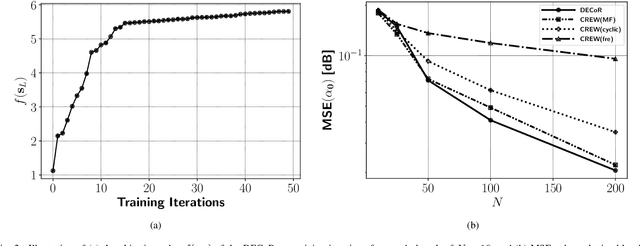
Abstract:In radar systems, unimodular (or constant-modulus) waveform design plays an important role in achieving better clutter/interference rejection, as well as a more accurate estimation of the target parameters. The design of such sequences has been studied widely in the last few decades, with most design algorithms requiring sophisticated a priori knowledge of environmental parameters which may be difficult to obtain in real-time scenarios. In this paper, we propose a novel hybrid model-driven and data-driven architecture that adapts to the ever changing environment and allows for adaptive unimodular waveform design. In particular, the approach lays the groundwork for developing extremely low-cost waveform design and processing frameworks for radar systems deployed in autonomous vehicles. The proposed model-based deep architecture imitates a well-known unimodular signal design algorithm in its structure, and can quickly infer statistical information from the environment using the observed data. Our numerical experiments portray the advantages of using the proposed method for efficient radar waveform design in time-varying environments.
Deep One-bit Compressive Autoencoding
Dec 10, 2019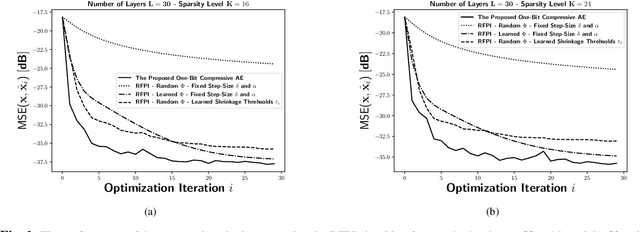
Abstract:Parameterized mathematical models play a central role in understanding and design of complex information systems. However, they often cannot take into account the intricate interactions innate to such systems. On the contrary, purely data-driven approaches do not need explicit mathematical models for data generation and have a wider applicability at the cost of interpretability. In this paper, we consider the design of a one-bit compressive autoencoder, and propose a novel hybrid model-based and data-driven methodology that allows us to not only design the sensing matrix for one-bit data acquisition, but also allows for learning the latent-parameters of an iterative optimization algorithm specifically designed for the problem of one-bit sparse signal recovery. Our results demonstrate a significant improvement compared to state-of-the-art model-based algorithms.
 Add to Chrome
Add to Chrome Add to Firefox
Add to Firefox Add to Edge
Add to Edge